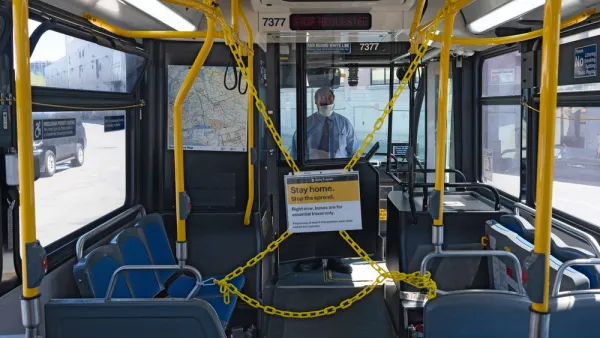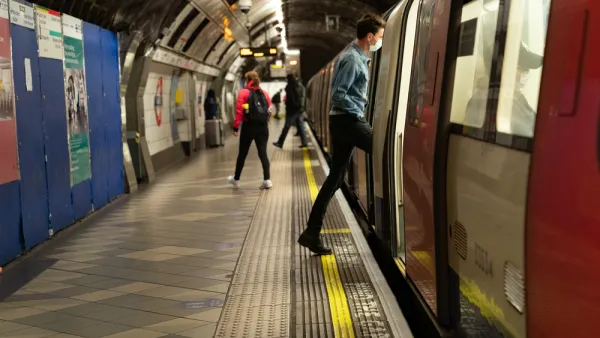Why is it hard for transit agencies to enforce pro-mask rules?

A few weeks ago, a certain relative of mine (who I shall call "R") was in a difficult situation. She got a part-time job, which required her to take a commuter train to Newark, New Jersey and a bus through the city of Newark to get to the job. She was not afraid to travel on the commuter train; it wasn’t very crowded, and people were generally wearing masks to reduce the risk of COVID-19 infection. But the bus was different; even though it was not enormously crowded, people were not always wearing masks, or were wearing them improperly, or were engaging in the sort of long cell phone conversations that are more likely to spread the virus. As a result, she quit the job.
Shortly afterwards, R asked me why the transit agency was not more aggressive about requiring riders to wear masks.* At first glance, this seems like an easy decision: if people are afraid to ride the bus because of unmasked riders, they won't. So why might a driver not enforce this rule?
First of all, agency every minute the bus driver spends arguing with riders is a minute more of delay that inconveniences people waiting for the bus. So the driver has to weigh two evils: the risk of infection from unmasked riders and the less dangerous, but more frequent, harm from sluggish buses.
Second, because talking loudly spreads the virus, arguing with riders also creates a public health risk: an argument means that a possibly-infected rider might talk even more and spread even more risk, and that a possibly-infected bus driver might talk and do the same. And since bus drivers might get closer to the rider in order to argue or to physically eject the rider, this too increases the risk of infection (because being ten feet from the rider is less risky than being two feet from the rider).
Third, if the rider is extremely unwilling to comply the driver might call the police to eject the rider—but this creates more risk in two ways. First, if the rider is infected the police might get infected as well. Second, if interactions become violent, that might cause someone to visit an emergency room, overburdening the health care system or even infecting doctors and nurses. Occasionally, violent interactions between police and citizens lead to riots, creating even more harm to a wide variety of persons.
Like many other rules, the "masks on buses" rule works only work if almost everyone is willing to comply without coercion. Once a critical mass of people decide to violate the rules, enforcement becomes extremely costly.
*One alternative might be to prominently post "how to wear a mask" notices. Although this would probably increase compliance with pro-mask rules, I suspect it would not lead to 100% compliance.

Analysis: Cybertruck Fatality Rate Far Exceeds That of Ford Pinto
The Tesla Cybertruck was recalled seven times last year.

National Parks Layoffs Will Cause Communities to Lose Billions
Thousands of essential park workers were laid off this week, just before the busy spring break season.

Retro-silient?: America’s First “Eco-burb,” The Woodlands Turns 50
A master-planned community north of Houston offers lessons on green infrastructure and resilient design, but falls short of its founder’s lofty affordability and walkability goals.

Test News Post 1
This is a summary

Analysis: Cybertruck Fatality Rate Far Exceeds That of Ford Pinto
The Tesla Cybertruck was recalled seven times last year.

Test News Headline 46
Test for the image on the front page.
Urban Design for Planners 1: Software Tools
This six-course series explores essential urban design concepts using open source software and equips planners with the tools they need to participate fully in the urban design process.
Planning for Universal Design
Learn the tools for implementing Universal Design in planning regulations.
EMC Planning Group, Inc.
Planetizen
Planetizen
Mpact (formerly Rail~Volution)
Great Falls Development Authority, Inc.
HUDs Office of Policy Development and Research
NYU Wagner Graduate School of Public Service




























